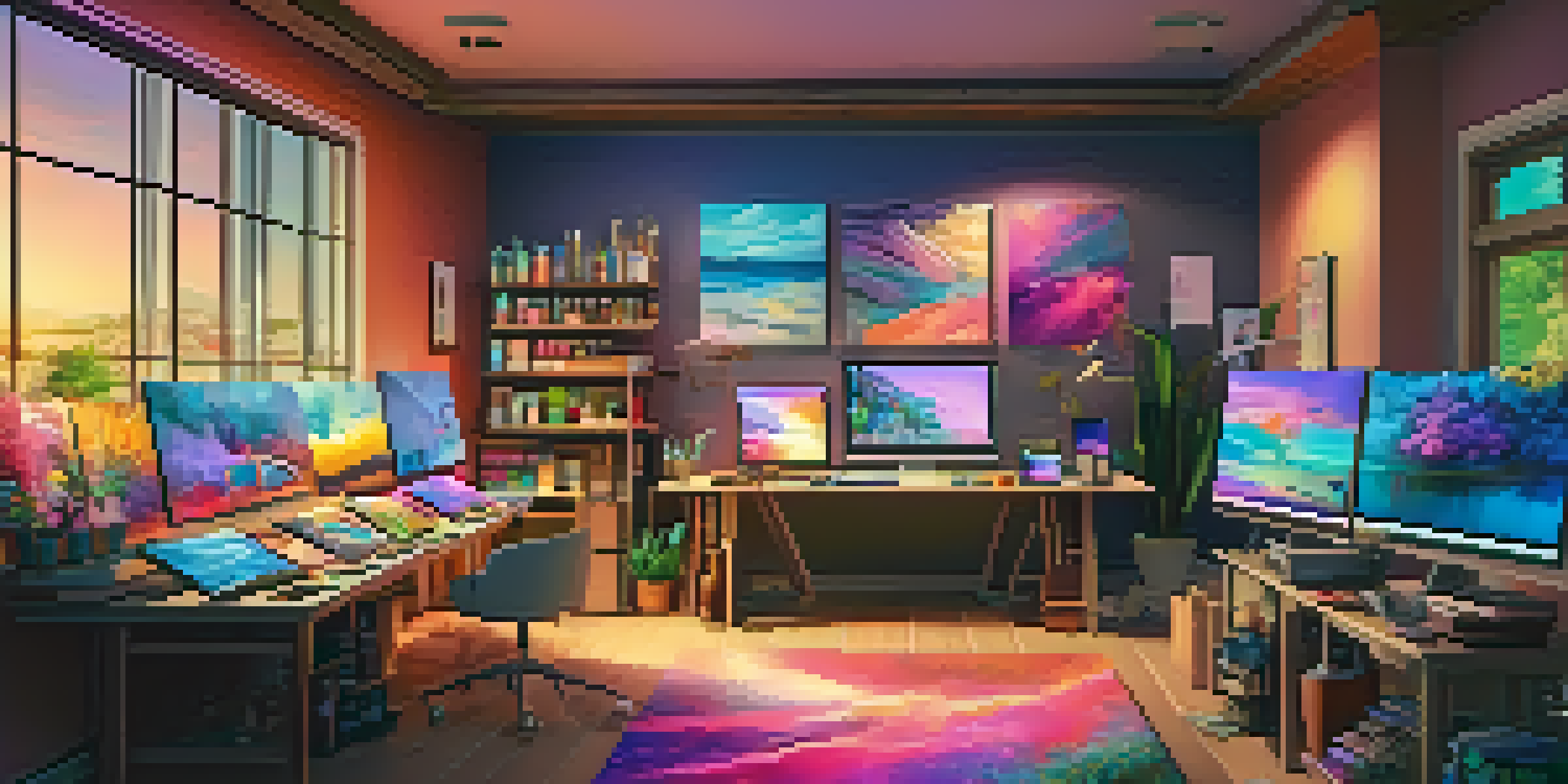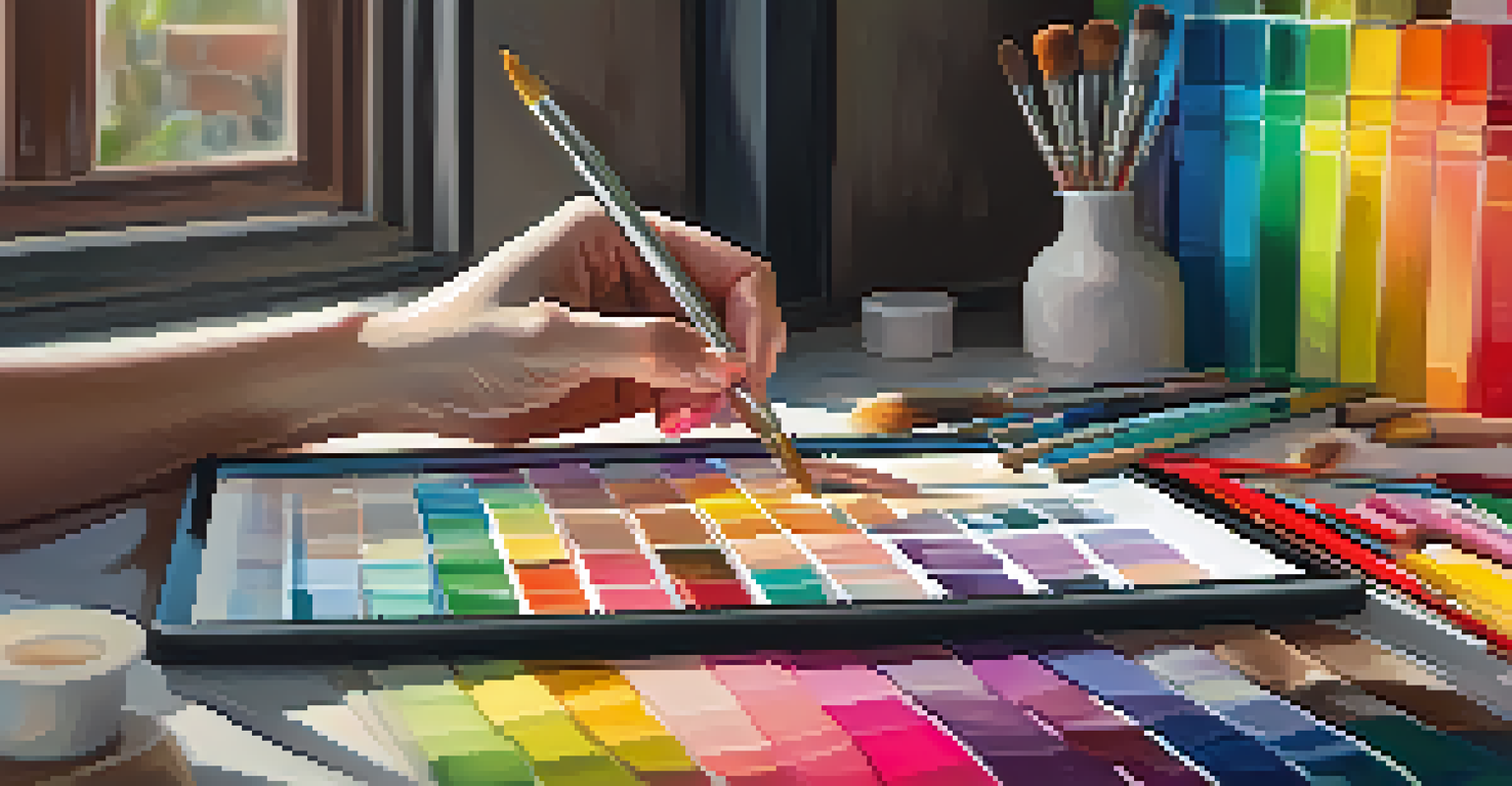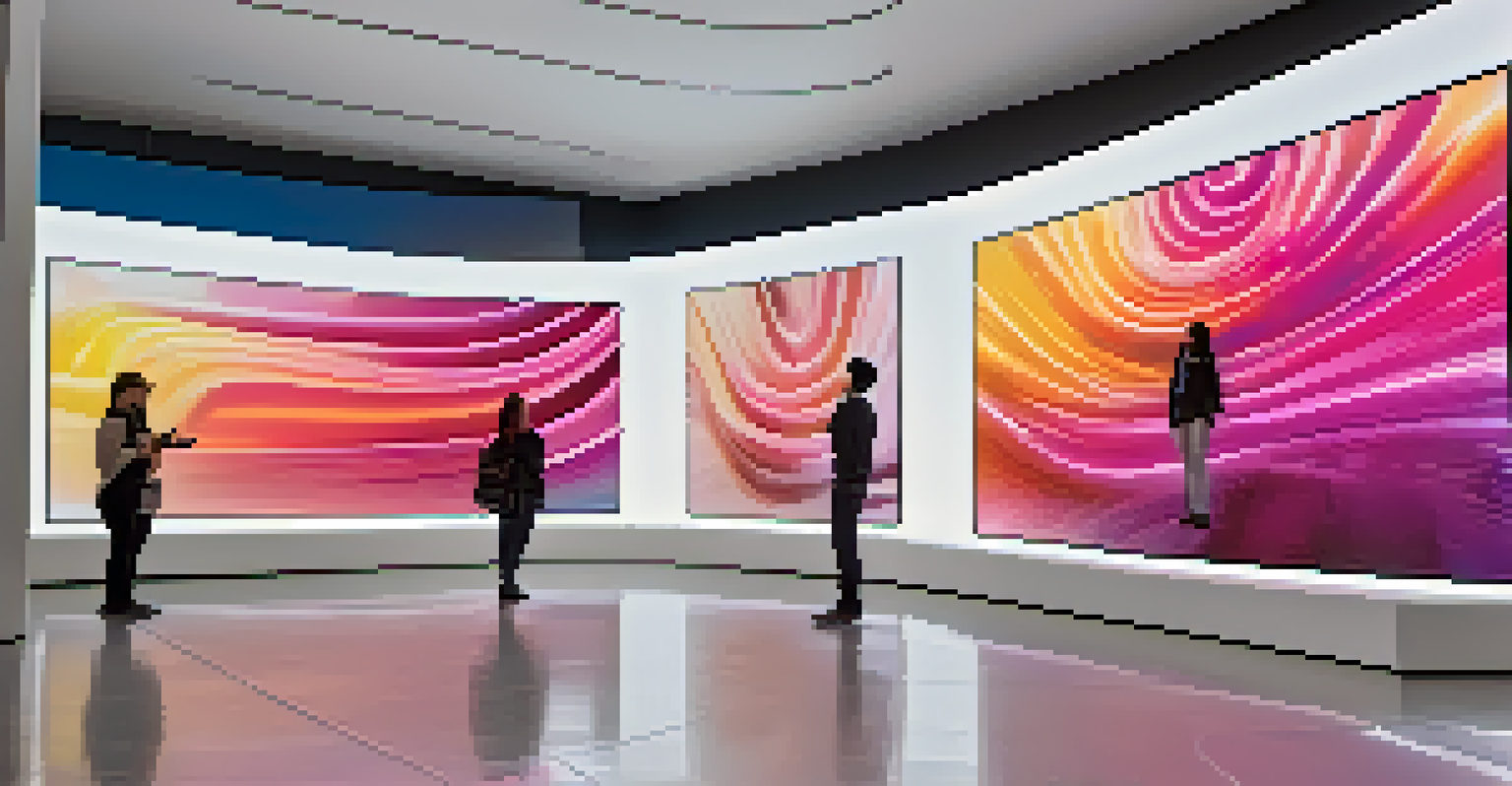Digital Art and Its Influence on Contemporary Art Landscapes

Understanding Digital Art in Today's World
Digital art refers to creations made or enhanced using digital technology. This includes everything from digital paintings and illustrations to 3D models and animations. With the rise of technology, more artists are exploring this medium, blurring the lines between traditional and digital art forms.
Digital art is like a bridge between traditional and modern forms of expression, allowing for endless creativity and innovation.
The appeal of digital art lies in its accessibility and versatility. Artists can easily experiment with colors, techniques, and styles without the limitations of physical materials. Moreover, digital platforms allow for instant sharing and collaboration, fostering a vibrant community of creators.
As digital tools become more sophisticated, they empower artists to innovate and push creative boundaries. For instance, virtual reality (VR) and augmented reality (AR) are now being used to create immersive art experiences that engage viewers in entirely new ways.
The Rise of NFTs: A Game Changer for Artists
Non-fungible tokens, or NFTs, have revolutionized the way digital art is bought and sold. These unique digital assets allow artists to tokenize their work, creating scarcity and ownership in the digital realm. This has opened up new revenue streams for artists, making it possible for them to earn directly from their creations.

NFTs also challenge traditional art market dynamics, where galleries and auction houses often dictate value. Now, artists can reach global audiences without intermediaries, democratizing art sales. This shift empowers artists and gives collectors a new way to invest in digital art.
Digital Art's Accessibility and Innovation
Digital art offers artists the freedom to experiment with new techniques and share their work instantly, fostering creativity and community.
However, the rise of NFTs has sparked debates about environmental concerns and the future of ownership in the digital age. As the conversation evolves, artists are finding innovative ways to address these issues while continuing to embrace the opportunities NFTs present.
Blending Traditional and Digital Art Forms
Many contemporary artists are seamlessly blending traditional and digital techniques. For example, an artist might start with a physical painting and then enhance it digitally, creating a hybrid piece that showcases both mediums. This fusion allows for a richer exploration of creativity and expression.
The rise of NFTs has created a new paradigm in the art world, empowering artists to take control of their creations and reach global audiences.
This blending of techniques can be seen in various art forms, including street art, where artists use digital tools for planning and execution. It not only expands their creative toolkit but also resonates with diverse audiences, bridging the gap between different art communities.
Moreover, this hybrid approach challenges the notion of what constitutes 'real' art. As artists continue to experiment, they are redefining artistic boundaries and encouraging viewers to appreciate the value of both traditional and digital works.
Digital Art as a Means of Social Commentary
Digital art has become a powerful medium for social and political commentary. Artists are using their platforms to address pressing issues like climate change, inequality, and human rights. Through engaging visuals and interactive elements, they provoke thought and inspire action.
For example, digital installations can reach wider audiences, making art accessible to those who might not visit a gallery. This democratization of art allows for diverse voices and perspectives to emerge, fostering important conversations within society.
NFTs Revolutionizing Art Ownership
Non-fungible tokens (NFTs) have transformed the art market by allowing artists to sell their work directly, creating new revenue streams and democratizing access.
Furthermore, the immediacy of digital art means that artists can respond quickly to current events. This speed allows them to capture the zeitgeist and create impactful works that resonate with audiences in real time.
The Role of Social Media in Promoting Digital Art
Social media platforms have transformed how artists connect with audiences and promote their work. Sites like Instagram and TikTok enable artists to showcase their digital creations to a global audience, often leading to viral trends and increased visibility. This platform democratizes art exposure, allowing even emerging artists to gain recognition.
The interactive nature of social media also fosters community building, where artists and fans engage in dialogue about their work. This connection not only supports the artists but also cultivates a sense of belonging among art lovers who share similar interests.
Additionally, social media has become a vital tool for artists to receive feedback and evolve their practices. By sharing their creative processes and engaging with followers, artists can refine their work and discover new directions in their artistic journeys.
Digital Art in Education and Accessibility
Digital art is increasingly being integrated into educational settings, providing students with new ways to express their creativity. Programs that focus on digital tools allow learners to experiment with various techniques and mediums, fostering a more inclusive approach to art education.
Accessibility is one of the most significant advantages of digital art. With online platforms and resources, aspiring artists can access tutorials, software, and communities that were previously unavailable. This access breaks down barriers and encourages diverse participation in the art world.
Blending Traditional and Digital Techniques
Contemporary artists are integrating traditional and digital methods, challenging perceptions of art and expanding creative possibilities.
Moreover, digital art can be created and shared with minimal resources, making it an attractive option for those from different backgrounds. This democratization of art education cultivates a new generation of artists who might not have had the opportunity to explore traditional art forms.
The Future of Digital Art and Its Influence
The future of digital art looks promising, with continuous advancements in technology driving innovation. As tools become more sophisticated and accessible, artists will likely uncover new techniques and mediums that challenge our understanding of art. This evolution will keep the art world dynamic and ever-changing.
Emerging technologies like artificial intelligence (AI) and machine learning are already shaping how digital art is created and experienced. Artists are experimenting with algorithms and AI-generated art, pushing the boundaries of creativity and collaboration.

As digital art continues to influence contemporary landscapes, it will be exciting to see how it reshapes our perception of art, ownership, and community. The ongoing dialogue around these changes will enrich the art world and encourage diverse voices to emerge.